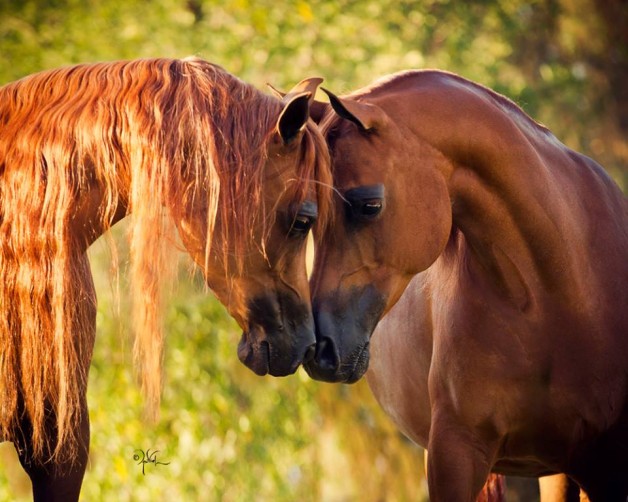Researchers take a closer look at the chestnut horse’s fiery image.
By Avi Blake, DVM
Since the domestication of the horse, people have placed great importance on coat color, leading to breeds defined almost exclusively by color—and to many strong perceptions about links between color and temperament. Within the equestrian community, this association has long been made with regard to chestnut-colored horses, which have the reputation of being “crazy,” or just a bit more difficult to handle and train.
Although not well-established, a relationship between mutations in the genes that influence melanocytes, resulting in various coat colors and physiologic or behavioral traits, has been suggested in other species. So the image of the unruly chestnut horse may not be just an old wives’ tale. In order to explore this further, researchers recently conducted a study designed to get a better feel for whether or not the presuming thought that chestnut-colored horses are more difficult to train and more likely to display undesirable behaviors holds any merit.
Studied behavior
The study used an internationally accessible online questionnaire modeled after the Canine Behavioral Assessment and Research Questionnaire (a validated dog behavior survey) to assess a wide range of equine behaviors. Horse owners who completed the questionnaire, consisting of 90 behavioral assessment questions, were not informed of the study’s purpose, and the questions were specifically designed to be neutral in nature.
Questions focused on describing behaviors during handling and exercising as well as behaviors toward various stimuli in the horse’s environment and when the horse is isolated from other horses. Of the over 900 horse owners who responded, 477 were included in the study. The participants were limited to those with chestnut or bay horses. Stallions and cryptorchid horses were also excluded, as they were underrepresented in the participating pool.
Results show an ill-deserved rep
Not surprisingly, a horse’s age, breed and gender seemed to have the greatest influence on the behavioral assessment. There was no evidence to suggest that coat color played a role in the ease or difficulty of training or handling. In fact, a significant difference between chestnut- and bay-colored horses was only noted in four of the questions. These questions all related to a horse’s willingness to approach a variety of stimuli. Chestnut horses were more likely to approach objects or animals regardless of whether they were familiar with them or not.
But where there’s smoke, there’s fire
While the findings of this preliminary study appear to debunk the myth of the obstinate chestnut, there may be some connection after all. Based on the results of this pilot study, the researchers propose that the chestnut phenotype may impart a certain level of “boldness.” The interest and desire to approach both the familiar and the novel is one area where these redheads dominated. Whether this represents a true difference or not has yet to be shown, but if it is real it could contribute to the perception that chestnut horses are more “crazy” than horses of a different color.
Further research is needed to shed more light on the origin of the chestnut horse’s reputation for bad behavior. But for now, it seems just possible that it stems from a naturally high level of self-confidence.



